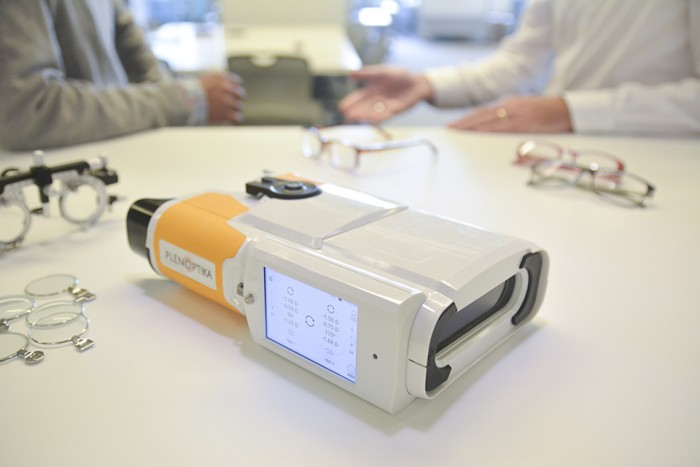According to the World Health Organisation, more than 2 billion people worldwide don’t have access to corrected lenses. Vision impairment can lead to a poor quality of life, learning difficulties, and lost employment opportunities.
While money is sometimes a factor, the biggest cause is lack of access to optometrists who are usually located in urban areas. A team from MIT in the US have hit the market in India with what they hope could be a global solution.
PlenOptika was founded six years ago by Shivang Dave, Daryl Lim, Eduardo Lage, and Nicholas Durr, to replace the bulky, expensive eye examination equipment with a more accessible autorefractor, Quicksee.
“People at the bottom of the pyramid have poor vision, because they don’t have glasses or aren’t aware of how to get glasses. It’s a big unmet medical need we’re trying to address,” says Dave.
Traditional autorefractors are large, heavy, stationary machines that can cost up to $15,000. They work by detecting reflections from infrared light shone through the eye to determine the size and shape of a ring at the back of the eye. This helps optometrists determine a baseline for corrective lens prescriptions.
Resembling a pair of binoculars or monoculars, Quicksee uses an advanced device used to map the eye before LASIK surgery. The method is more precise than traditional autorefraction technology, producing more accurate measurements. Further, the device displays a prescription estimate within about 10 seconds of measurement.
The binocular version will be sold in the US while the monocular iteration has been released in India. While technicians will need to measure one eye at a time, the device provides equally accurate measurements at a cost of less than half the price of the binocular version.
The device is designed to have a large-scale impact on this growing issue, explains Dave. “We couldn’t train 100,000 new optometrists, but we could look at the technologies available and re-engineer them to be lower cost and easier to use.”
PlenOptika is just one company using low-cost technologies to disrupt the status quo in healthcare. Check out this 20-cent medical device from the University of Stanford.







